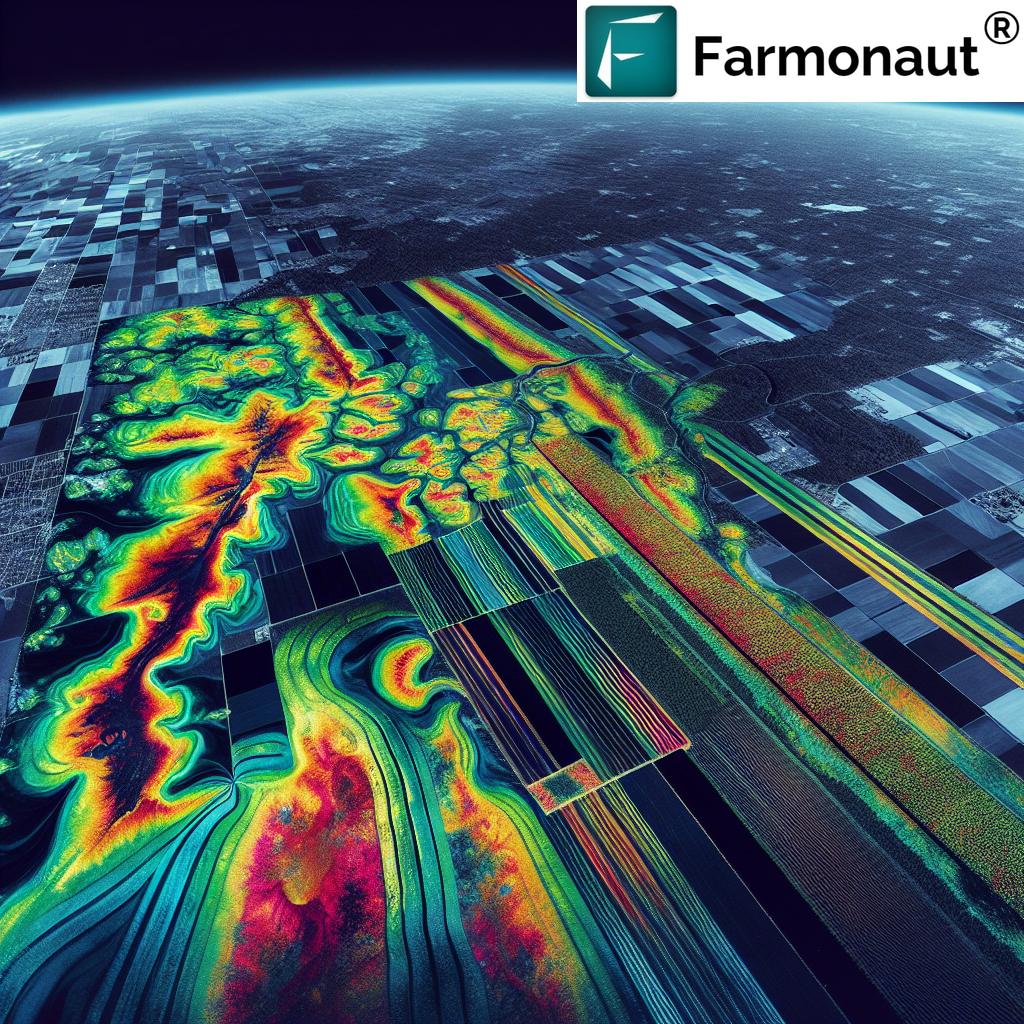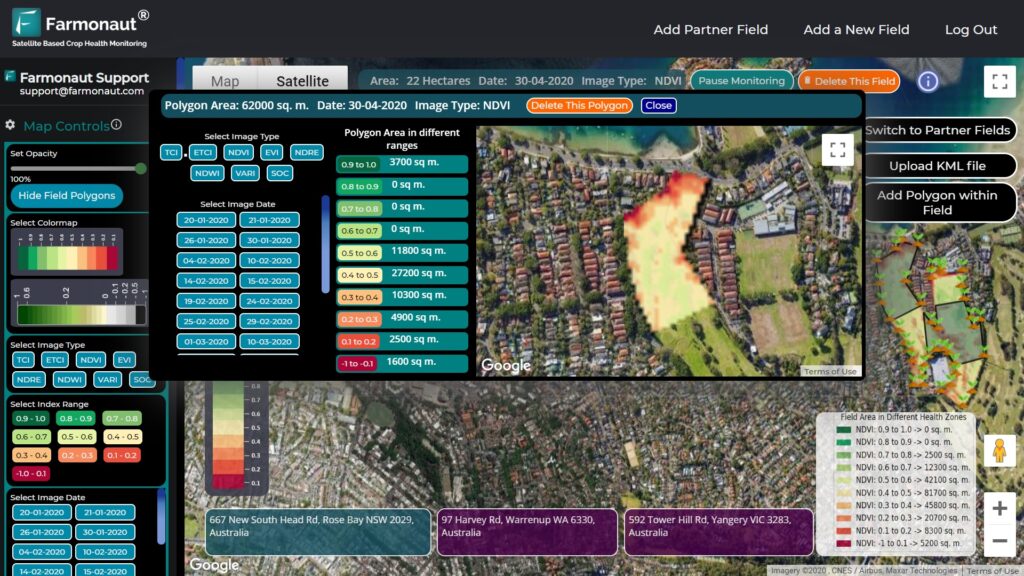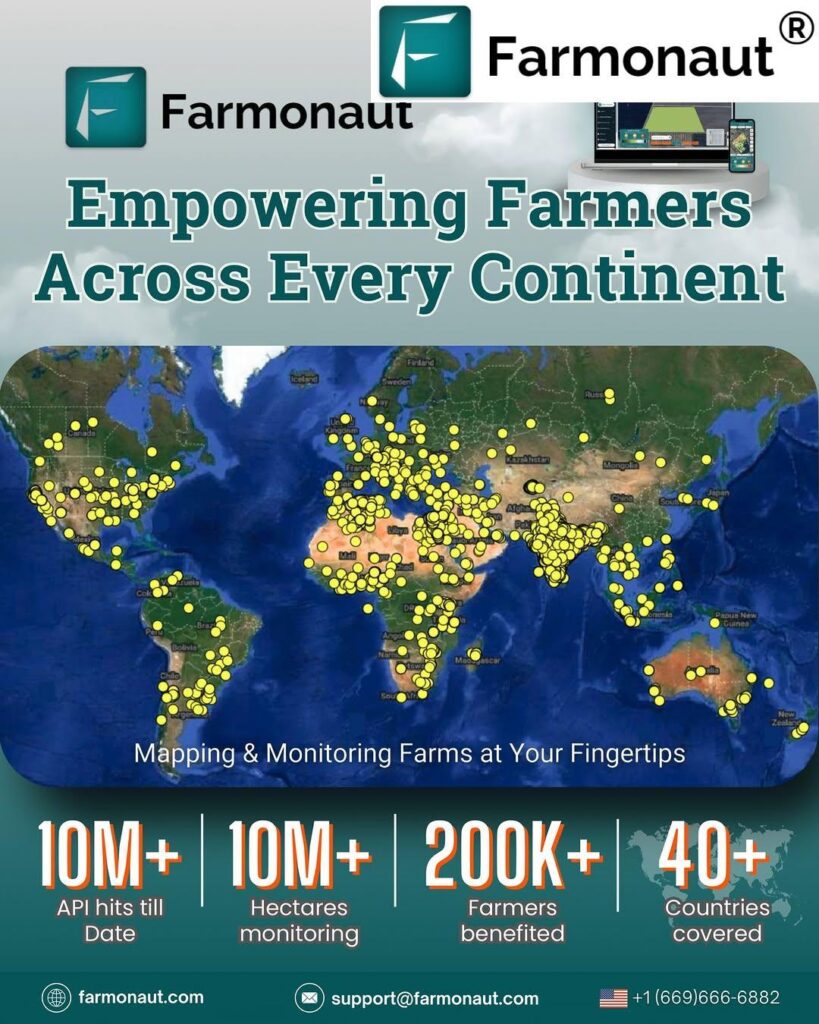Breaking News: New U.S. Secretary of Agriculture Sworn In, Pledges to Revitalize Rural America and Boost Agricultural Innovation
“The new U.S. Secretary of Agriculture’s appointment marks a significant shift in agricultural policy, potentially impacting over 2 million farms nationwide.”
In a momentous development for U.S. agriculture and rural America revitalization, we are thrilled to report that Brooke Rollins has been sworn in as the 33rd U.S. Secretary of Agriculture. This appointment marks a pivotal moment for agricultural policy initiatives and signals a renewed focus on supporting American farmers and shaping the future of U.S. agriculture.

The swearing-in ceremony took place on February 13, 2025, at the Supreme Court building in Washington, D.C. Associate Justice of the U.S. Supreme Court Clarence Thomas administered the oath in a private ceremony, marking the beginning of a new era for the United States Department of Agriculture (USDA).
A Mandate for Change: Rollins’ Vision for U.S. Agriculture
Secretary Rollins brings a wealth of experience in domestic policy and strategic initiatives to her new role. With a background in agricultural development and law, she is poised to champion the interests of farmers, ranchers, and agriculture-dependent communities across the nation.
In her first statement as Secretary, Rollins expressed her commitment to the American agricultural sector: “Every day, I will fight for American farmers, ranchers, and the agriculture community. Together, we have an historic opportunity to revitalize rural America and to ensure that U.S. Agriculture remains the best in the world for generations to come.”
This pledge aligns perfectly with the administration’s strategic initiatives for rural areas, promising innovative approaches to agricultural policy and rural development.
A Strong Senate Confirmation
The U.S. Senate’s confirmation of Rollins by a vote of 72-to-28 demonstrates strong bipartisan support for her appointment. This overwhelming majority reflects confidence in her ability to lead the USDA and implement transformative policies that will benefit the agricultural sector and rural communities alike.
Rollins’ Background: A Texas Success Story
Brooke Leslie Rollins hails from Glen Rose, Texas, and her roots in agriculture run deep. Her journey to becoming the U.S. Secretary of Agriculture is a testament to her dedication to public service and her passion for agricultural development:
- Graduated with honors from Texas A&M University with a degree in agricultural development
- First female elected student body president at Texas A&M
- Earned her Juris Doctor with honors from the University of Texas School of Law
- Served as Governor Rick Perry’s policy director in Texas
- Led the Texas Public Policy Foundation (TPPF) for 15 years, transforming it into a national force
- Founder, President, and CEO of the America First Policy Institute (AFPI)
- Served in key White House roles during the previous administration, including Director of the Domestic Policy Council and Assistant to the President for Strategic Initiatives
Rollins’ experience in Texas agricultural policy and her national-level work make her uniquely qualified to address the challenges facing U.S. agriculture today.
Key Initiatives and Focus Areas
As we look forward to Secretary Rollins’ tenure, it’s crucial to understand the key areas where she plans to make an impact. The following table outlines some of the expected initiatives and their potential effects on the agricultural sector:
| Focus Area | Proposed Initiative | Potential Impact |
|---|---|---|
| Rural Revitalization | Infrastructure Investment | Improved market access for rural communities, enhanced connectivity |
| Agricultural Innovation | Research & Development Funding | Increased crop yields, sustainable farming practices |
| Food Security | Local Food Systems Support | Strengthened regional food supply chains, reduced food insecurity |
| Farmer Support | Expanded Financial Assistance Programs | Greater financial stability for small and medium-sized farms |
| Climate-Smart Agriculture | Green Technology Adoption Incentives | Reduced carbon footprint, increased farm resilience |
| Trade and Market Access | International Partnership Development | Expanded export opportunities for U.S. agricultural products |
| Next-Generation Farming | Young Farmer Training and Support | Sustainable succession in farming, innovation in agricultural practices |
These initiatives demonstrate Secretary Rollins’ comprehensive approach to addressing the multifaceted challenges facing U.S. agriculture and rural communities.
The Role of Technology in Agricultural Innovation
As we consider the future of U.S. agriculture under Secretary Rollins’ leadership, it’s important to highlight the role of technology in driving innovation and efficiency in the sector. Companies like Farmonaut are at the forefront of this technological revolution in agriculture.
Farmonaut offers advanced, satellite-based farm management solutions that align well with the Secretary’s focus on agricultural innovation and support for American farmers. Through its android, iOS, web/browser App, and API, Farmonaut provides valuable tools for precision agriculture, making it accessible and affordable for farmers of all sizes.
Some key features of Farmonaut’s platform that align with the Secretary’s vision include:
- Real-time crop health monitoring using satellite imagery
- AI-based advisory systems for optimized farm management
- Blockchain-based traceability for enhanced food security
- Resource management tools to improve farm efficiency
These technologies can play a crucial role in achieving the goals set forth by Secretary Rollins, particularly in areas such as agricultural innovation, climate-smart agriculture, and support for small and medium-sized farms.
“Rural America, home to approximately 60 million people, stands to benefit from the Secretary’s pledge to revitalize communities and boost innovation.”
Challenges and Opportunities Ahead
As Secretary Rollins takes the helm at the USDA, she faces a landscape of both challenges and opportunities in U.S. agriculture. Some key areas that will likely require her attention include:
- Climate Change Adaptation: Developing strategies to help farmers adapt to changing weather patterns and extreme events.
- Trade Relations: Navigating international trade agreements to ensure fair market access for U.S. agricultural products.
- Rural Broadband Access: Expanding high-speed internet access to rural areas to support technological adoption in farming.
- Sustainable Farming Practices: Promoting environmentally friendly farming methods without compromising productivity.
- Farm Labor Shortages: Addressing the ongoing labor challenges in the agricultural sector.
These challenges present opportunities for innovation and policy development that could significantly shape the future of U.S. agriculture.
The Impact on Small Towns and Rural Communities
One of Secretary Rollins’ key pledges is the revitalization of agriculture-dependent small towns across America. This focus is crucial, as rural communities have faced numerous challenges in recent years, including population decline, economic stagnation, and limited access to services.
By prioritizing rural development, Secretary Rollins aims to:
- Create new economic opportunities in rural areas
- Improve access to healthcare and education
- Modernize rural infrastructure
- Support local businesses and entrepreneurs
These efforts could have a transformative effect on rural America, helping to bridge the urban-rural divide and ensure that all communities can thrive in the 21st century economy.

The Role of Precision Agriculture in Rollins’ Vision
Precision agriculture is likely to play a significant role in Secretary Rollins’ plans for agricultural innovation. This approach to farming management uses information technology and a wide array of items such as GPS guidance, control systems, sensors, robotics, drones, autonomous vehicles, variable rate technology, GPS-based soil sampling, and automated hardware to make farming more accurate and controlled.
Companies like Farmonaut are at the forefront of this revolution, offering satellite-based farm management solutions that align perfectly with the Secretary’s vision for a technologically advanced agricultural sector. By leveraging these technologies, farmers can:
- Optimize resource use, reducing waste and environmental impact
- Increase crop yields through data-driven decision making
- Improve farm profitability by reducing input costs
- Enhance sustainability through targeted application of resources
The adoption of precision agriculture technologies could be a key factor in achieving Secretary Rollins’ goals for agricultural innovation and sustainability.
The Future of U.S. Agriculture: A Collaborative Approach
As we look to the future of U.S. agriculture under Secretary Rollins’ leadership, it’s clear that collaboration will be key. The challenges facing the sector are complex and multifaceted, requiring input and cooperation from various stakeholders, including:
- Farmers and ranchers
- Agricultural technology companies
- Research institutions
- State and local governments
- Environmental organizations
- Consumer groups
By fostering partnerships and open dialogue among these groups, Secretary Rollins can ensure that her policies and initiatives are well-informed, effective, and responsive to the needs of all stakeholders in the agricultural sector.
The Role of Data in Shaping Agricultural Policy
In today’s digital age, data-driven decision making is crucial for effective policy development and implementation. Secretary Rollins’ background in strategic initiatives positions her well to leverage data analytics in shaping agricultural policy.
Companies like Farmonaut, with their advanced satellite-based monitoring systems and AI-driven analytics, can provide valuable data insights to inform policy decisions. This data can help in:
- Assessing the impact of climate change on different agricultural regions
- Identifying areas that require infrastructure investment
- Monitoring the effectiveness of various agricultural programs and initiatives
- Predicting crop yields and potential food security issues
By incorporating these data-driven insights into policy development, Secretary Rollins can ensure that USDA initiatives are targeted, effective, and responsive to the real-world needs of farmers and rural communities.
Empowering the Next Generation of Farmers
One of the critical challenges facing U.S. agriculture is the aging farming population and the need to attract and support the next generation of farmers. Secretary Rollins’ focus on agricultural innovation and rural revitalization could play a crucial role in making farming more attractive to young people.
Some potential initiatives in this area could include:
- Expanding educational programs in agricultural sciences and technology
- Providing financial support and mentorship for young farmers
- Promoting the use of cutting-edge technologies in farming
- Creating networking and knowledge-sharing platforms for young farmers
By investing in the next generation of farmers, Secretary Rollins can help ensure the long-term sustainability and competitiveness of U.S. agriculture.
The Global Context: U.S. Agriculture in the World Stage
As Secretary of Agriculture, Rollins will play a crucial role in representing U.S. agricultural interests on the global stage. This includes:
- Negotiating trade agreements to expand market access for U.S. agricultural products
- Collaborating with international partners on global food security initiatives
- Sharing best practices and technologies with other nations to advance global agricultural sustainability
- Addressing global challenges such as climate change and biodiversity loss
Secretary Rollins’ experience in domestic policy and strategic initiatives will be valuable in navigating these complex international relationships and ensuring that U.S. agriculture remains competitive in the global marketplace.
The Path Forward: Implementing Secretary Rollins’ Vision
As Secretary Rollins begins her tenure at the USDA, the agricultural community eagerly anticipates the implementation of her vision. Key steps in this process may include:
- Conducting a comprehensive review of current USDA programs and policies
- Engaging with stakeholders across the agricultural sector to gather input and build consensus
- Developing a strategic plan that outlines specific goals and initiatives for the coming years
- Working with Congress to secure funding and legislative support for key initiatives
- Fostering partnerships with private sector companies, like Farmonaut, to leverage technological innovations in agriculture
As these plans take shape, we can expect to see a renewed focus on innovation, sustainability, and rural development in U.S. agricultural policy.
Conclusion: A New Chapter for U.S. Agriculture
The appointment of Brooke Rollins as the 33rd U.S. Secretary of Agriculture marks the beginning of a new chapter for U.S. agriculture. With her diverse background in agricultural development, law, and strategic policy initiatives, Secretary Rollins is well-positioned to lead the USDA in addressing the complex challenges facing the agricultural sector today.
Her commitment to revitalizing rural America, boosting agricultural innovation, and supporting American farmers aligns well with the needs of the sector and the goals of the current administration. As she begins her tenure, the agricultural community looks forward to seeing how her vision will translate into concrete policies and initiatives that will shape the future of U.S. agriculture.
In this era of rapid technological advancement, companies like Farmonaut will play a crucial role in realizing Secretary Rollins’ vision for a more innovative and sustainable agricultural sector. By leveraging satellite technology, AI, and data analytics, these companies can provide farmers with the tools they need to increase productivity, reduce environmental impact, and thrive in an increasingly competitive global marketplace.
As we move forward, it will be essential for all stakeholders in the agricultural sector to work together, embracing innovation and sustainability to ensure that U.S. agriculture remains strong, resilient, and capable of meeting the challenges of the 21st century.
FAQ Section
Q: What are Secretary Rollins’ main priorities as the new U.S. Secretary of Agriculture?
A: Secretary Rollins’ main priorities include revitalizing rural America, boosting agricultural innovation, supporting American farmers, and ensuring U.S. agriculture remains competitive globally.
Q: How might Secretary Rollins’ background in Texas influence her approach to national agricultural policy?
A: Her experience with Texas agricultural policy and her work at the Texas Public Policy Foundation may inform her approach to issues such as water management, ranching, and balancing agricultural needs with environmental concerns on a national scale.
Q: What role will technology play in Secretary Rollins’ vision for U.S. agriculture?
A: Technology is expected to play a significant role, with a focus on precision agriculture, data-driven decision making, and innovative solutions to improve farm productivity and sustainability.
Q: How might Secretary Rollins address the challenges of climate change in agriculture?
A: She is likely to promote climate-smart agricultural practices, invest in research for resilient crop varieties, and support farmers in adopting sustainable farming methods.
Q: What impact might Secretary Rollins’ appointment have on international agricultural trade?
A: Given her background in strategic initiatives, she may focus on negotiating favorable trade agreements and expanding market access for U.S. agricultural products globally.
Earn With Farmonaut: Affiliate Program
Earn 20% recurring commission with Farmonaut’s affiliate program by sharing your promo code and helping farmers save 10%. Onboard 10 Elite farmers monthly to earn a minimum of $148,000 annually—start now and grow your income!
As we conclude this comprehensive overview of Secretary Rollins’ appointment and its implications for U.S. agriculture, we invite you to stay informed and engaged with the latest developments in agricultural policy and technology. The future of farming is bright, and with the right leadership and innovative solutions, we can ensure a sustainable and prosperous agricultural sector for generations to come.










